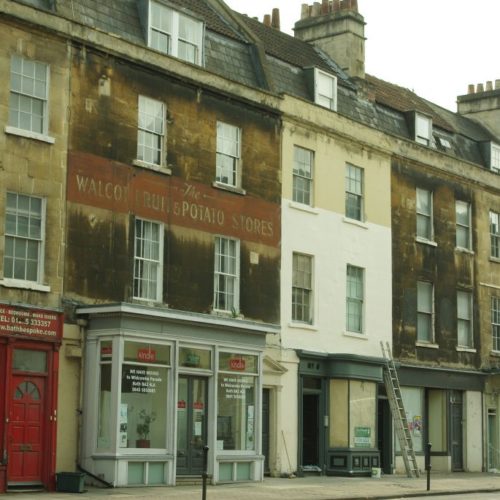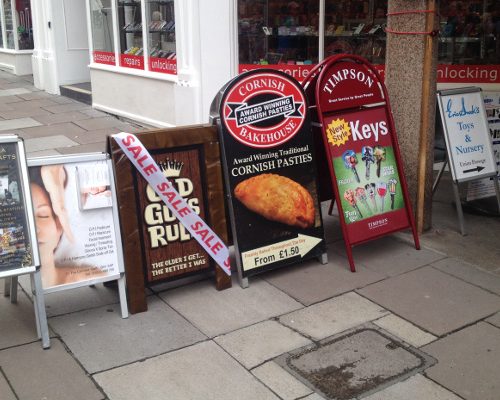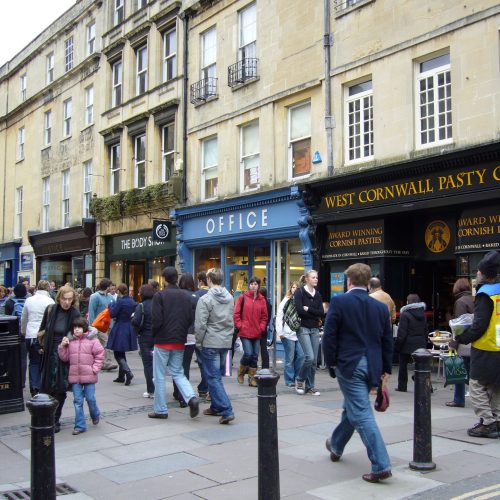One of the special characteristics of Bath’ street scene is its distinctive and varied use of historic shopfronts and traditional signage techniques, central to the characterisation of the city’s thriving city centre and aesthetic charm. The city has been able to develop its own ‘vernacular’ style reflected both in the city centre and local high streets such as Larkhall and Moorland Road. Whilst the addition of new shopping districts such as Southgate have introduced areas of more contemporary signage, there continues to be an expectation that signage should be high-quality and reflective of the wider historic character of the Bath City-Wide Conservation Area and World Heritage Site.
The use of traditional materials and finishes when undertaking signage works – modern materials such as acrylic or vinyl are unlikely to be considered acceptable in this sensitive context characterised by the traditional palette of materials.
The use of illuminated signage, excessive external illumination or shop window illumination, or LED screens or digital advertisements is contrary to Bath’s low level lighting and dark skies character.
Free-standing street signage (eg. A-boards) tends to obstruct pavements and result in excessive visual clutter, and along with outdoor seating areas should be carefully managed to ensure an appropriate balance between the needs of the business and the visual amenities and access requirements of the street scene. Street furniture should adhere to the Bath Pattern Book.




